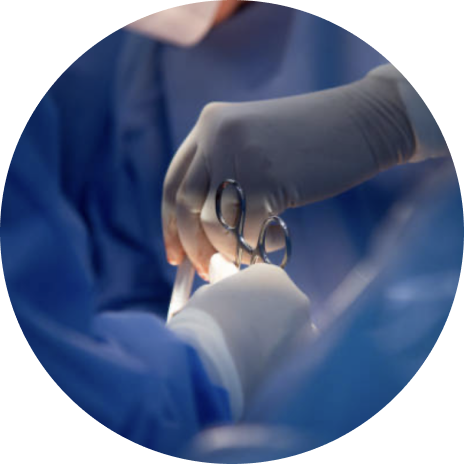Am I a candidate for ovarian cyst surgery?
Your surgeon may suggest ovarian cystectomy in the following cases:

Ovarian cyst surgeries can be performed by two approaches:
Two to 3 small incisions are made on your abdomen. Carbon dioxide gas is introduced to inflate your abdomen so that the surgical area can be viewed clearly. A laparoscope (a narrow lighted tube with a camera) is inserted through one of the incisions to guide your surgeon with the help of images relayed on a large monitor. Other surgical instruments are inserted through the other incisions.
A single large incision is made on your abdomen to access the surgical site. This method is considered when large cysts need to be removed, and when the whole ovary or uterus must be removed.
Using these approaches, the different types of surgeries that can be performed are briefed below.
Ovarian cystectomy is performed under general anaesthesia. The cysts are carefully excised from the ovary, ensuring the contents do not spill out. Once freed from the ovary, the cyst is opened and the contents aspirated to reduce its size. The deflated cyst is then removed through one of the abdominal incisions.
Alternatively, the intact cyst can be removed through the vagina or it can be collected and decompressed within a retrieval bag, minimising the chance of spillage of the cysts contents within the pelvic cavity.
The affected ovary is separated from the surrounding tissues and blood supply. It is either removed through the incision or it is placed in a pouch before removal.
Following ovarian cyst surgery, you will be given medication to relieve pain and discomfort. If a laparoscopic approach was done, you may experience back and shoulder pain as a result of the carbon dioxide gas used. This will resolve with time. You may also have spotting or vaginal discharge.
The advantages of a laparoscopy over laparotomy are:
During your recovery, alert your doctor if you notice any of the symptoms below that may indicate an infection:
Ovarian cystectomy can help remove ovarian cysts while preserving fertility, but does not stop other cysts from forming.
As with most surgeries, ovarian cyst surgery may be associated with potential complications such as:
If you have undergone a laparoscopic procedure, you will be able to get back to your daily routine in about 2 weeks; however, you may require about 6 to 8 weeks following a laparotomy.
Since there are chances of recurrence, regular monitoring of the ovaries is advised.
Any costs involved will be discussed with you prior to your surgery.
Extensive research is being done to find better treatment options for ovarian cysts. Some of the recent studies are listed below:
